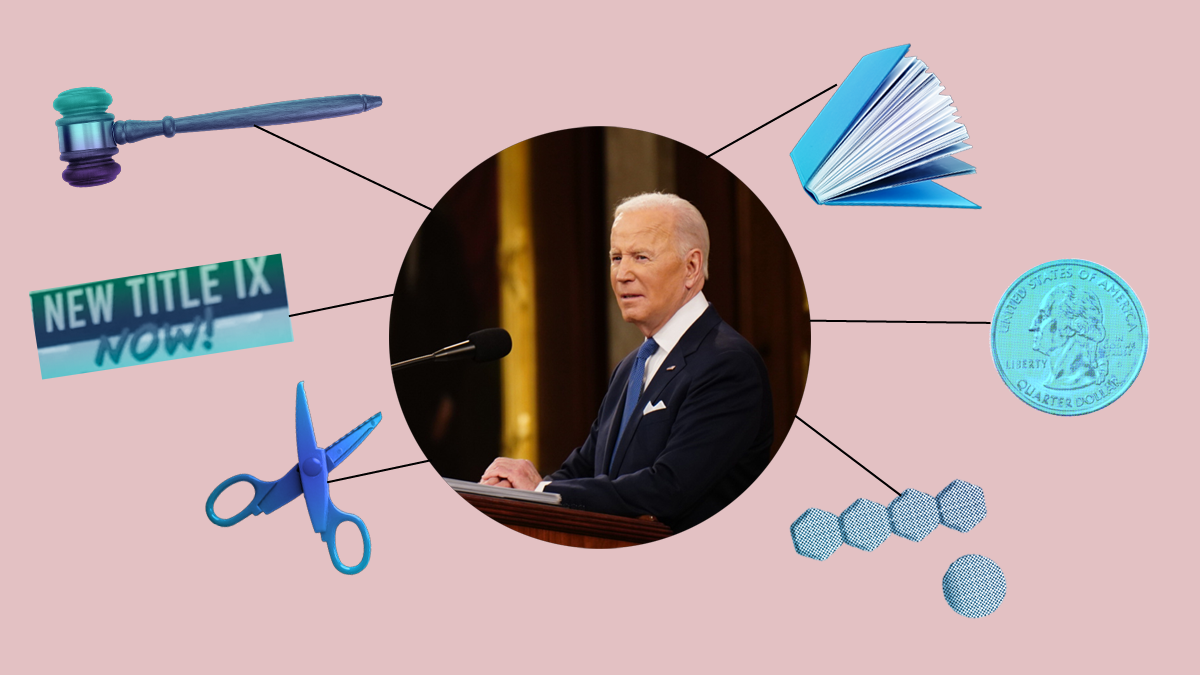Abortion rights, women of color, and LGBTQIA+ people are under attack. Pledge to join us in fighting for gender justice.
We Need to Do More than Talk about Child Care

 Recently NPR highlighted one of the major reasons that the United States doesn’t have a comprehensive child care system today – President Nixon vetoed the Comprehensive Child Development Act in 1971, which would have created such a system. This bill was the culmination of a strong Coalition effort to address this important issue. The Comprehensive Child Development Act would have established child care centers that were open to all parents and charged fees based on a sliding scale.
Recently NPR highlighted one of the major reasons that the United States doesn’t have a comprehensive child care system today – President Nixon vetoed the Comprehensive Child Development Act in 1971, which would have created such a system. This bill was the culmination of a strong Coalition effort to address this important issue. The Comprehensive Child Development Act would have established child care centers that were open to all parents and charged fees based on a sliding scale.
Prior to his veto, President Nixon appeared to support the Comprehensive Child Development Act. Nixon said that “What happens to the child from a nutritional standpoint, from an educational standpoint, from an environmental standpoint in the years between 1 and 5 may affect that child for the balance of his life regardless of what may happen after that time.” We know even more about child development now than we did when Nixon vetoed this bill and we know this to be true now more than ever before. Children who grow up in poverty are far more likely to struggle in school, to have difficulty holding a job later in life, and to spend time in prison. All of these outcomes become more likely the longer a child is in poverty. But families are far more likely to be impoverished if their parents cannot work because they don’t have access to affordable child care.
However, Nixon decided to veto the Comprehensive Child Development Act, calling it “the most deeply flawed provision” of the Economic Opportunity Amendments Act, the package it was a part of. Nixon did not veto the bill because it didn’t work or universal child care and education wasn’t a laudable goal, but it appears that it might have been solely for political reasons. After his trip to visit China, President Nixon needed to score political points by standing up against communism. And unfortunately, his Administration decided to characterize the bill as creating state-sponsored child care centers which sounded enough like communism to some of the American public to be a good veto target. While vetoing a bill that he had previously argued for and that would have set the country on a path towards a high-quality child care system, Nixon argued that these child care centers would cost too much and be too close to state indoctrination. Pat Buchanan, who worked in the White House at the time, wrote the veto message. And his intent was not only to kill the specific bill but to kill the idea of universal child care altogether.
Studies have shown that child care assistance helps low-income families maintain more stable employment with increased salaries over time. But our current child care system doesn’t function as a significant social safety net; only about 15 percent of children who qualify for child care subsidies under federal law receive help. Money allocated to federal child care assistance has decreased every year from 2014 to 2002, with only 1.4 million children served in 2014 – the lowest number since 1998. Families need monthly help for child care to be able to afford high-quality care for their children. Although child care, especially infant and toddler care, costs more than in-state college tuition in many states, there are still serious gaps in states’ child care assistance policies. Most child care workers do not make enough to support their own families; nearly half utilized some type of federal income support program between 2009 and 2013. This makes it even more difficult to retain educated child care teachers who can provide high-quality care. Significantly expanding child care assistance to families for child care will help families work, will help children learn and grow, and will help improve the quality of child care jobs.
Over the past several months, child care has come up in the news cycle as both presidential candidates have proposed major child care plans. Increasingly, people are talking about child care. Let’s do more than talk. We need to make sure that child care is affordable and accessible for parents, high-quality and beneficial for children, and pays well for those who provide it. It is time to fix our mistakes from forty years ago and create a child care system that works for everyone.



